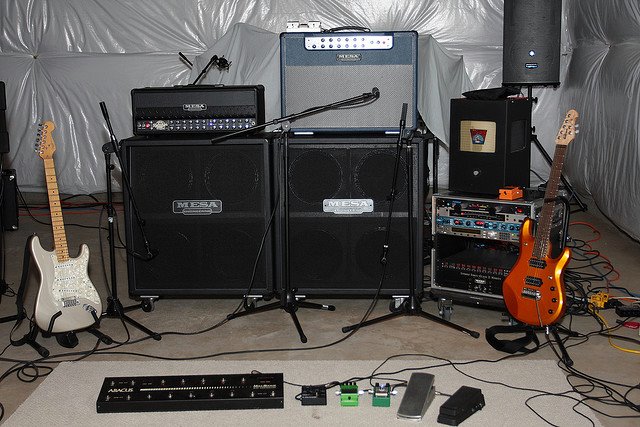bjoneill74 said:
I have a few comments on this.
I have a TriAxis (v2 with the recto board - no phat mod) and a 2:Ninety.
I have been using this combination with 2 Mesa recto 4x12 cabs and love it.
I have been reading how great the Mark V's are and finally broke down and got one.
I like to research things a lot, but realized after ordering it that they (TriAxis and Mark V) are kind of meant to do the same thing (cover the Mark series amps).
I started to worry as I kinda want variety when I change or add something.
I worried that they'd be very close to the same thing.
I just got the Mark V a few days ago and my time with it is limited, but...
They sound very very different to me.
I'll start by saying that I love my main rig (TriAxis/2:Ninety) and will likely continue to use it.
The Mark V on all channels seems very noticeably brighter, more focused, more scooped.
I liken it to my old rig with the blankets taken off of the speakers.
I'm not trying to piss on the TriAxis.. I find it warmer (the blanket over the speaker thing works in many instances for me).
More playing around is needed, but they are very different.
I'm not too fond of the cleans on with the TriAxis, but love the clean on the MK V.
I think LD Yellow 2 on the TriAxis works better for me than Channel 2 in the MKV.
Channel 3 on the MK V does some flat out amazing heavy tones that are more focused and less muddy than the TriAxis.
I play mainly prog rock which isn't always in the heavy realm so I very much value everything between sparkly clean and the balls out metal crunch.
I also have a Lonestar 2x12 and an old Studio .22 (which doesn't work correctly.. I'll need to get that fixed or ditch it).
All of these amps are very different.
BTW.. those looking for midi control for the Mark V --> http://www.rjmmusic.com/miniampgizmo.php
^ That's my next purchase.. The loop switchers look **** cool as well.
Brian
Hi guys,
This is my first post and I wanted to resurrect this thread to share my findings on my personal quest for perfect tone.
I have a TA + 2:90 myself and I could not get over :
1) the blanket effect
2) the dynamic voice which was not really what I needed
So instead of buying me a new boogie I found these fixes and I want to share them with you!
For the *blanket effect*: the cause is the presence control, which can be approximated to a low pass shelve filter.
It is removing the fizz indeed but is is also removing too muchife from the sound.
Solution: disable the presence by setting it to 10, and compensate by lowering the presence on the 2:90 and also by lowering the highs if required.
This would work especially with lead 2 modes.
For the *dynamic voice* ditch it in favor of Mesa 5 band eq pedal. The dynamic voice is dumping the 750hz band too much and it is not handle the 2200hz band too well, which IMHO is critical to ha be a great mark sound. The dynamic voice is too nasal so to speak!
Last but not least the tubes do the difference too.
I found out that the TA is not digging well the higher gain ones, (I. E. Sovtek). A mix of EH and jj + tung sol 5751 in v3 is what I found best so far.
Now with all of these fixes when a/b-ing my sound (triaxis into 2:90 into 2 notes captor + good ir) it seems on par with other pres, like the quad, the studio, or other mark heads.
I'm talking about sound quality here, I agree that each has its own voice but at least now the TA is as a good as the others.
Let me know what you think!




